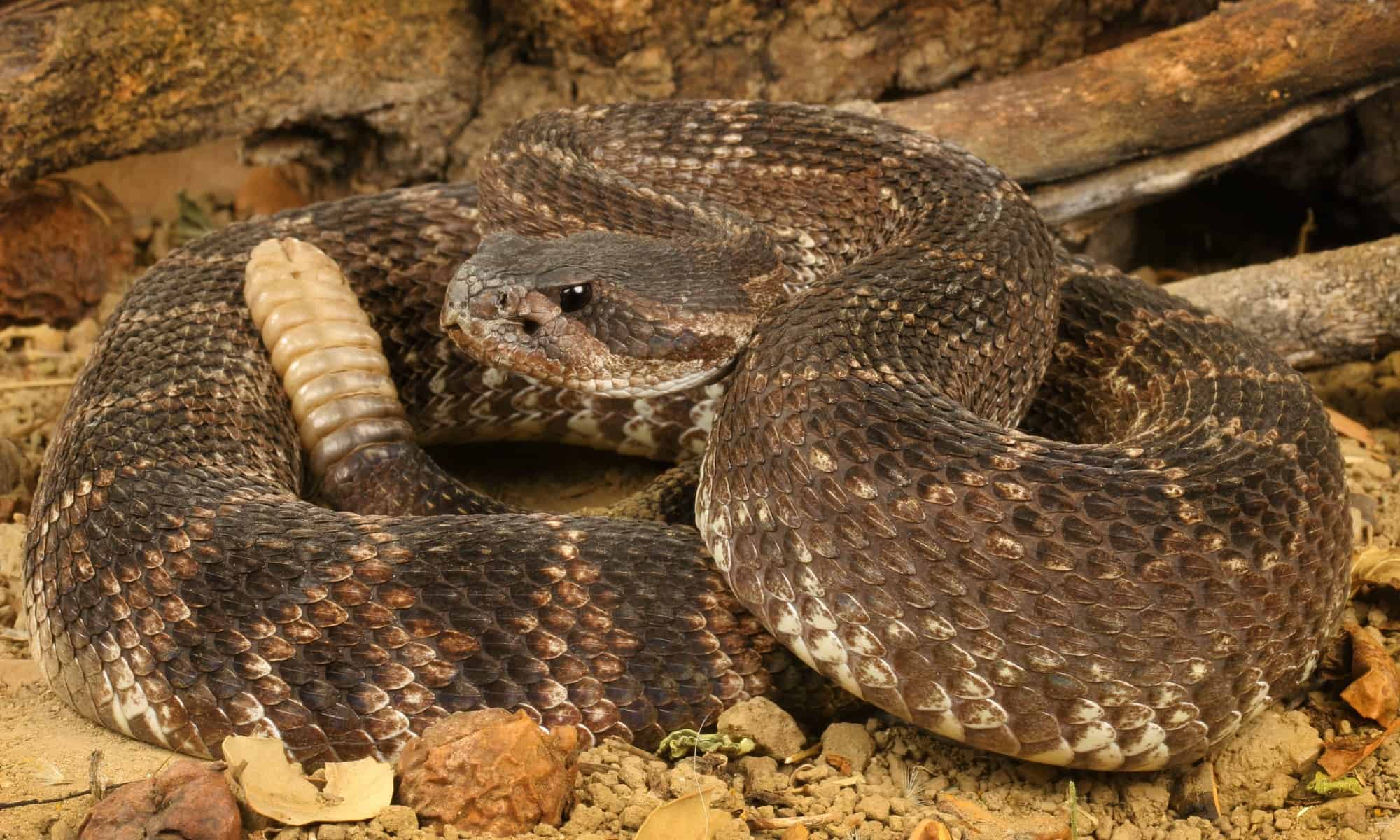This video takes us to a farm somewhere in the southwest U.S. where a woman has discovered a Southern Pacific rattlesnake sleeping near the fence in her yard. The snake wrangler arrives and walks toward the sleeping snake. The woman says she’s been watching it the whole time since she called, about 45 minutes. The snake hasn’t moved.
The wrangler walks up to the snake and determines it is, in fact, sleeping. That’s because its tongue is not flickering in and out. He grabs his tool to pick up the snake. When the tool makes contact, the snake instantly wakes up, and he’s angry! The wrangler tries to move the rattlesnake into a bucket, but it escapes. We can hear it rattling all the while. What would you do if you came across a sleeping rattlesnake?
Watch the video below, and take some time to learn more about rattlesnakes!
Watch the Breathtaking Video of Man vs. Sleeping Rattlesnake Below!
What is a Southern Pacific Rattlesnake?

Southern Pacific rattlesnakes can grow up to 4.5 feet long!
©Audrey Snider-Bell/Shutterstock.com
This species of rattlesnake lives in the southwestern U.S. and northwestern Mexico. Sometimes called the black diamond rattlesnake, this species’ venom is highly toxic to humans. These snakes are some of the largest rattlesnakes, growing up to 4.5 feet in length. Like many pit vipers, they hunt at night. This is when their heat-seeking sensors detect prey the best. During the day, they spend time warming themselves in the sun. This warmth helps them to digest their meals. Because they are cold-blooded, they must raise their body temperature through sunning. When they become nice and warm, they sometimes fall asleep in the sun, like the sleeping rattlesnake in our video.
How Do Rattlesnakes Sleep?
Matt Goode is a research scientist at the University of Arizona’s School of Natural Resources and the Environment. He specializes in snake research and how human growth/expansion into their territory changes things for them. He says that because rattlesnakes do not have eyelids, it is difficult to tell when they are sleeping. In fact, we don’t know that snakes actually sleep at all in the same way we do. Snakes do shut down body systems but do not have the same types of brainwaves during these periods that are associated with sleep.
Some snakes go through brumation during times of cold or lack of food. This is similar to hibernation but has some important differences. During hibernation, mammals fall into a deep sleep, where they stop eating and drinking entirely. However, during brumation, snakes still have periods of activity and continue drinking water to stay hydrated. They do not eat during this time. Some species brumate in groups.

The number of buttons a rattlesnake has on its rattle alone does not tell how old it is.
©Chase D’animulls/Shutterstock.com
Can You Tell the Age of a Rattlesnake by Its Rattles?
We’ve learned all about how rattlesnakes sleep, but what about the age-old question: can you tell how old a rattlesnake is by how many rattles it has? Well, the short answer is, no, the rattle cannot tell you the age of a rattlesnake. While it can’t give you an exact age, the rattle can help you make an educated guess.
Unless you know when the rattlesnake hatched, it’s impossible to know exactly how old it is. However, by taking a closer look at the rattle, you might be able to make a good guess at the age of the snake. Beware – rattlesnakes are very dangerous. All rattlesnakes are venomous. Sometimes, a bite can kill a person within six hours. Even dead snakes can inject venom if the fangs graze or puncture your skin.
The segments of the rattlesnake’s rattle are called buttons. They gain new buttons every time they shed their skin. How often a snake sheds depends on the species and how well they are eating. Typically, they shed up 2-4 times yearly. Young snakes shed every 2-4 months. Once they mature, they shed less frequently, about once every 4-6 months. Sometimes, the buttons get broken off or fall off on their own. Some species grow faster or shed more. Because of all the different factors, even guessing age is difficult.
How to Make an Educated Guess of a Rattlesnake’s Age
Hopefully, you’re able to find a sleeping snake! Since they can be dangerous, try taking a photo of the snake and then zooming in on the rattle so you can examine and count the buttons. If the rattle tapers to a point, it’s a good assumption that the snake has never lost a button. When rattlesnakes’ buttons fall off, the rattles grow back wider and tend to remove the tapering effect. Most rattlesnakes reach adulthood by 3-4 years old. So, if you have a rattlesnake with 10 buttons, you can assume the snake is between 2.5-5 years old. Some rattlesnakes in captivity have lived to 30 years old!
Discover the "Monster" Snake 5X Bigger than an Anaconda
Every day A-Z Animals sends out some of the most incredible facts in the world from our free newsletter. Want to discover the 10 most beautiful snakes in the world, a "snake island" where you're never more than 3 feet from danger, or a "monster" snake 5X larger than an anaconda? Then sign up right now and you'll start receiving our daily newsletter absolutely free.
Thank you for reading! Have some feedback for us? Contact the AZ Animals editorial team.








